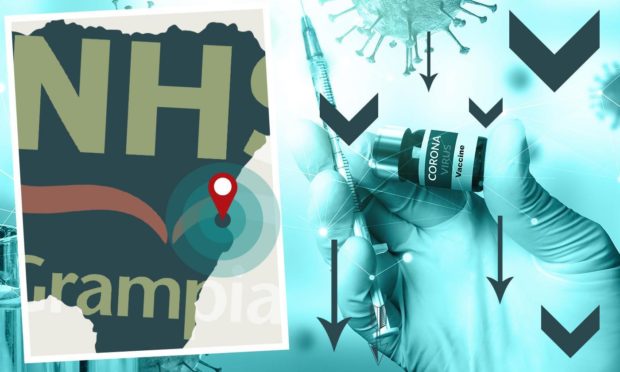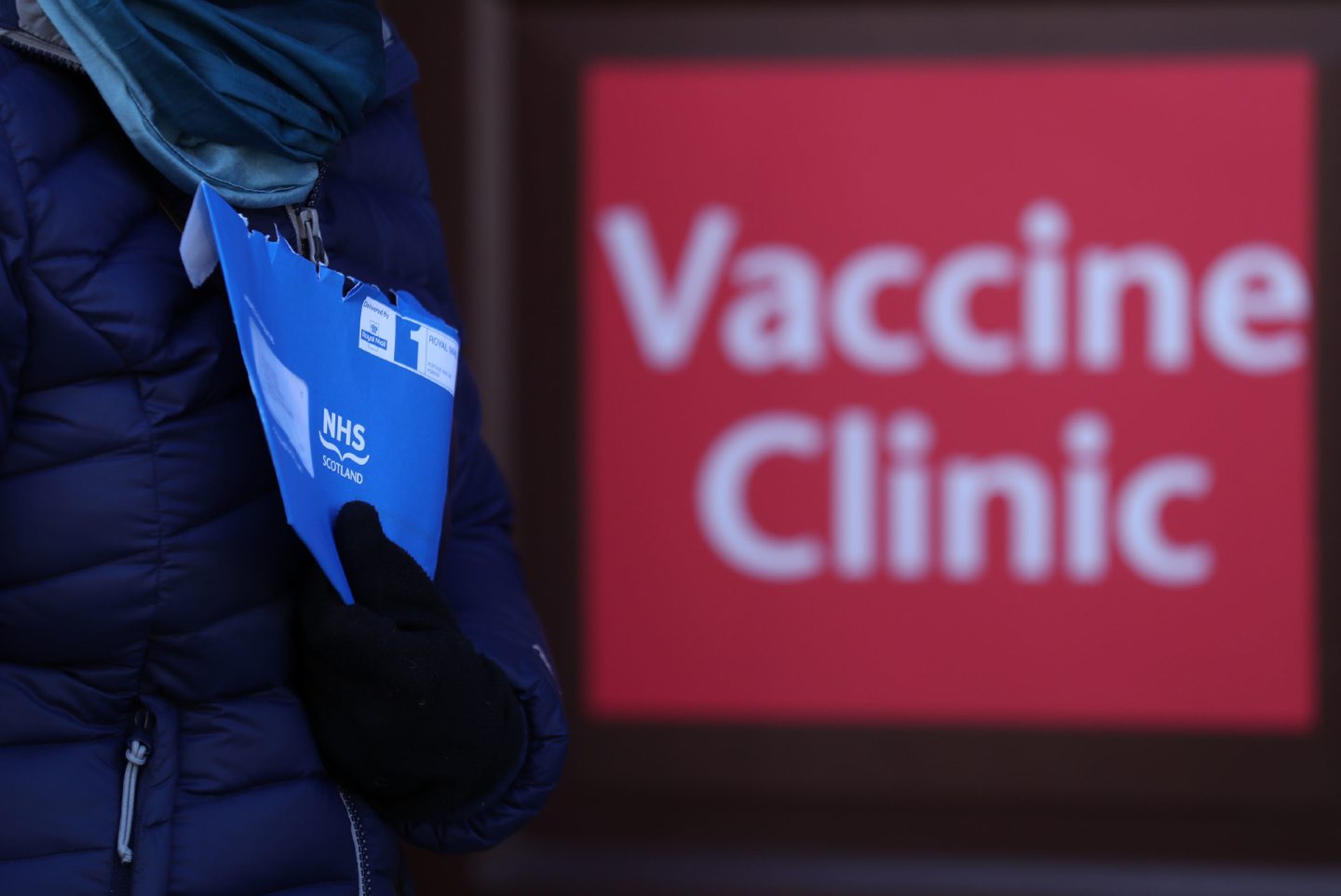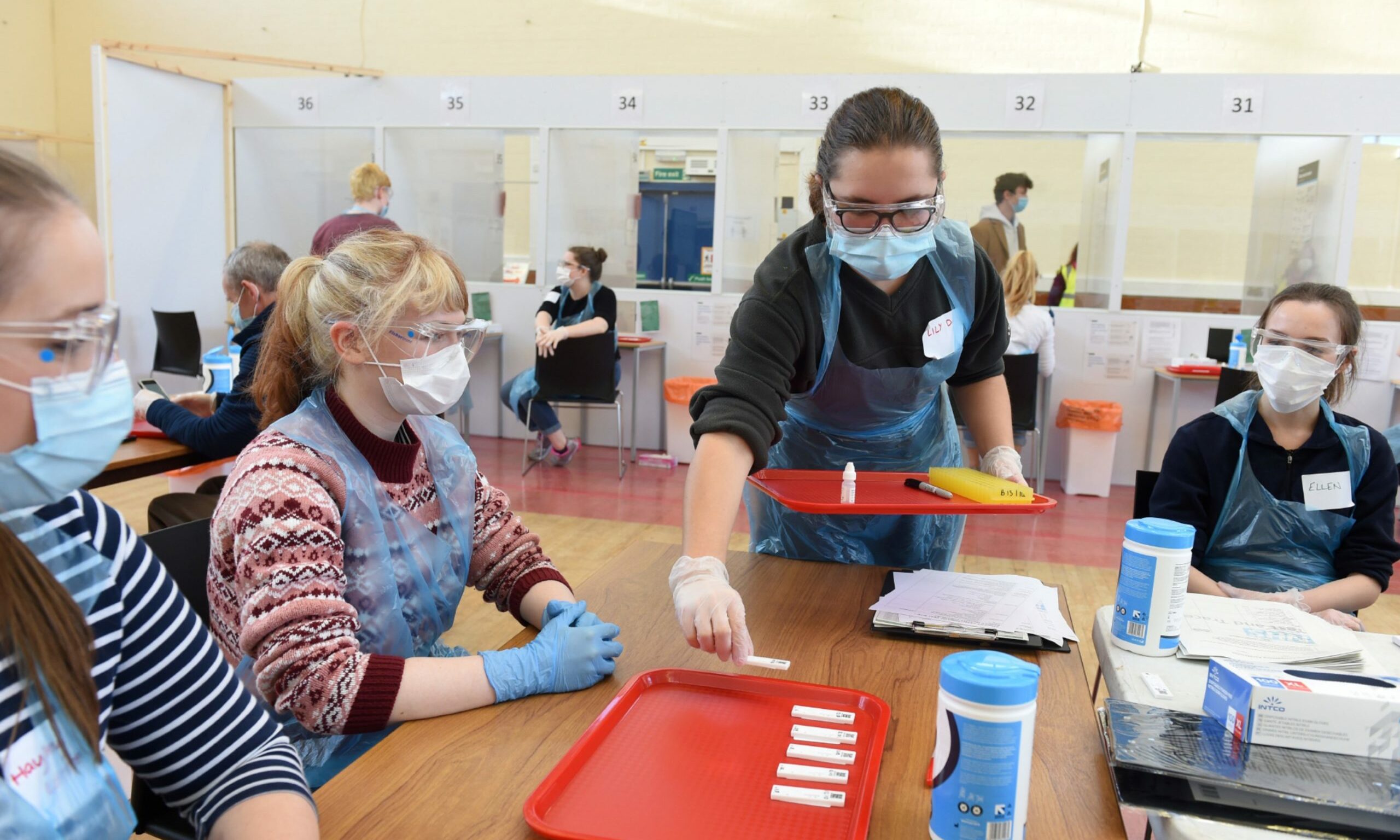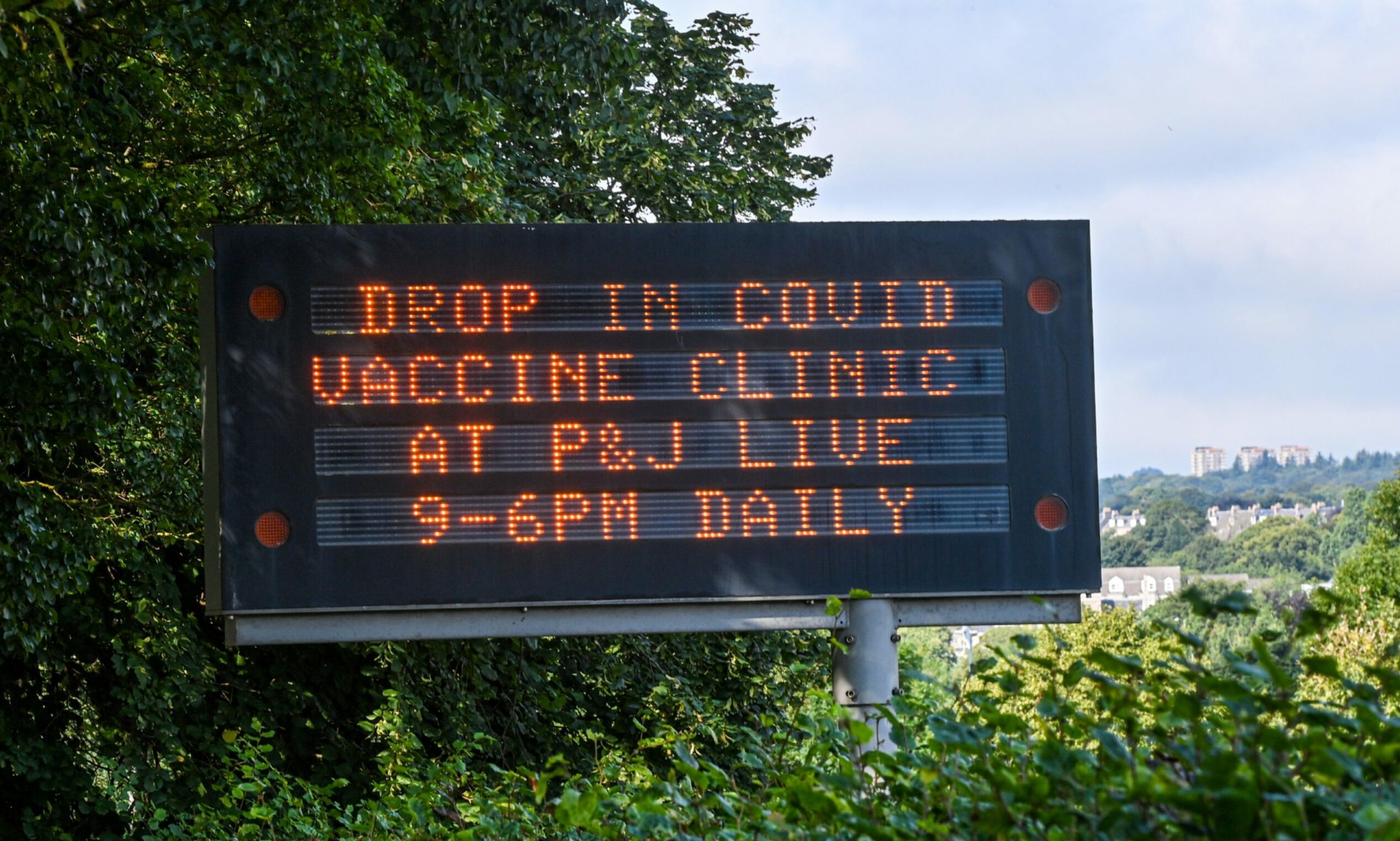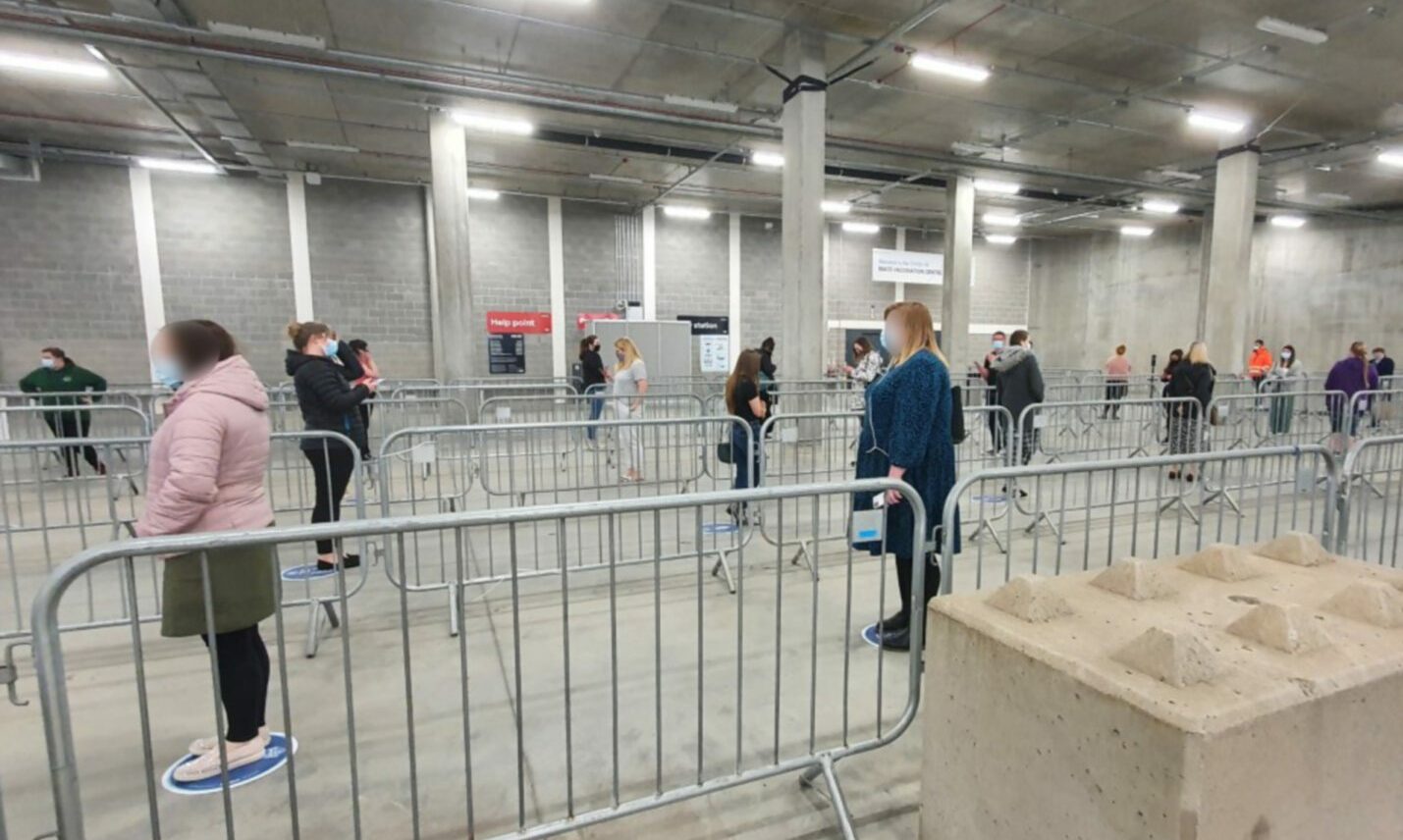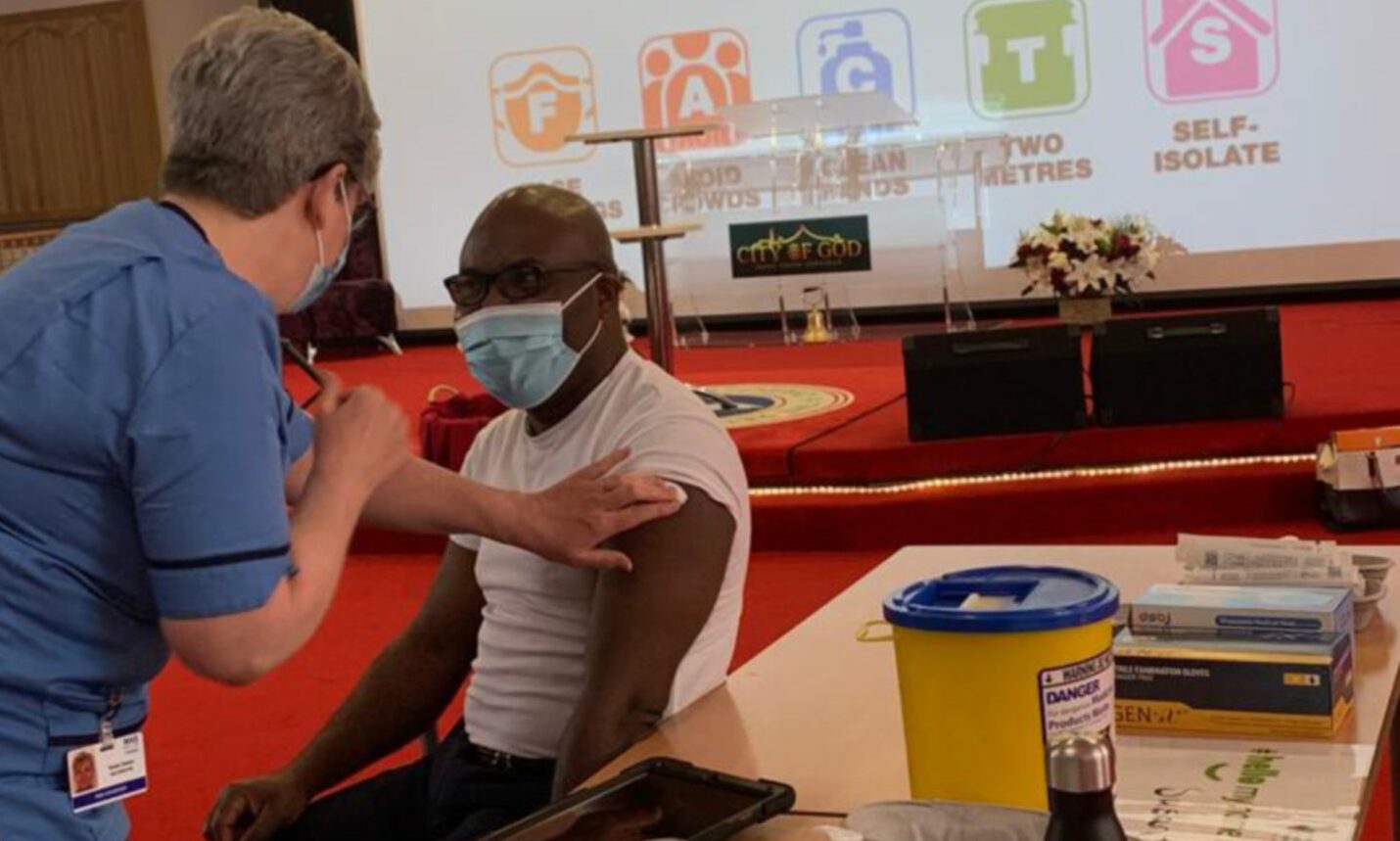Official stats show Aberdeen is lagging behind the rest of Scotland when it comes to Covid jabs, and the city’s head of vaccination has explained why.
The latest data from Public Health Scotland shows almost one-in-five adults within the Granite City is yet to receive their first dose of the coronavirus vaccine.
At the other end of the scale, almost all over-18s in areas like Argyll And Bute and East Dunbartonshire have been jabbed at least once.
But health chiefs say several factors could be skewing the figures – affecting not only Aberdeen, but the majority of Scotland’s main cities.
Cities lagging behind
When ranking all 32 of Scotland’s local authorities by vaccination rate for all over-18s, five of its seven cities place at the very bottom.
Aberdeen is followed by Glasgow, Dundee and Edinburgh – all of which have around 85% or fewer with a first dose – and Stirling is closer to the 90% mark.
While almost all people in the older age groups have received both jabs, the uptake has been slowing in younger adults.
Looking at Aberdeen specifically, just 66% of 18-to-29-year-olds have received their first dose of the vaccine. A little over 40% have had both.
In East Dunbartonshire, which has the highest percentage of vaccinated adults, more than 85% of 18-29s have had their first dose, with 53% fully jabbed.
‘Drift away’ from home
Sandy Reid, who has been leading the city’s vaccination programme, thinks a good number of these apparent “missed” jabs could have a simple explanation.
He explained: “We’ve learned, particularly with the younger age group, there’s often a drift away from where you lived with your parents.
“Wherever you come from it’s quite likely that, in your late teens, you’re a student or you’re living with someone else.
“But you might still be registered with the GP practice from when you were wee, and are no longer in that area.
“So our national record system says you’re still in that first house – so where are you, as you haven’t turned up.”
Swapping cities
Additionally, younger people are more likely to travel larger distances when they move home, compared to more settled older age groups.
Mr Reid added: “People move across cities much more than they might move from, say, one street in Alford to the next.
“Cities are more transient than rural areas, so I think that’s another factor.”
Part of this, he suspects, is also linked to the large student populations commonly found in built-up areas.
“When students went home for Christmas last year, I suspect some never came back again,” Mr Reid explained.
“If it had not been for Covid, they would still be in Aberdeen going about their business.
“We’re vaccinating people who are in Aberdeen and, by and large, (the students) are not here.”
Anecdotally health bosses have heard similar things about people from international communities, who headed back to their home countries when talks of national lockdowns began.
Mr Reid said, at one point, postal bosses were collecting hundreds of blue envelope appointment letters each week – all being returned to sender because of an unknown address in Aberdeen.
As a result, it can appear on paper as though people have been offered vaccination appointments and ignored them.
If you can’t bring people to the jabs…
This does not mean the vaccination teams chalk it up as a loss and move on, however.
Chiefs have developed a range of initiatives to continually raise awareness and find other ways of communicating with people.
These have included “piggybacking” on the council’s contact centre resources to reach out to people with missed appointments directly, and commandeering roadside notice boards.
Alongside pre-arranged jabs, staff at the P&J Live mass vaccination centre have been welcoming walk-ins as well – sometimes vaccinating dozens of people a day.
“Anybody who’s walked in has had multiple opportunities to come in – we’ve phoned them and written to them,” Mr Reid said.
“We all know people who’ve recently had their first vaccination who were saying they didn’t want to, but now they’ll have had it.”
…Bring the jabs to the people
Specific social media campaigns targeting residents in certain areas with low uptake have been proving fruitful, as have a range of pop-up clinics.
This includes NHS Grampian’s V In The Park, where staff would roll up ready to deliver walk-in jabs and general advice for passers-by.
It previously saw success at Hazlehead Park, alongside initiatives within the city’s Beach Ballroom and Aberdeen FC’s Pittodrie Stadium.
Mr Reid explained: “The first day at the beach it was lovely and warm, and 176 people came into that clinic on that day.
“There were a couple of us standing outside pleasantly asking people if they’d had a vaccine or would like one.
“They didn’t need to know there was going to be a clinic there because they were just walking past on a sunny day.
“And one of the team had the idea of going to the local Asda and asking for a tannoy message – and we had a number of people coming up (for a jab) saying they’d heard it in the supermarket.
“That’s the kind of tactic of going to where people are and plugging it, and it’s worked quite well.”
One vaccine makes a ‘massive’ difference
He added: “One vaccination in one place is making a massive different to that person, and their family, and who knows how wide a circle that is.
“The first day of V In The Park we had 19 vaccinated, but a lot of people came up to speak to the clinical team and ask questions.
“And that’s probably scaled up to more than 100 people who’ve heard that person had a vaccine and it was convenient and they didn’t need to book and it was really easy.
“We can’t get caught up in the ‘it must be 3,000’ epic scale of vaccines we were doing sometimes.
“Nineteen is really good because it means a whole lot of people vaccinated, and others influenced by hearing that.
“And we can only do that by going out to places.”
Team ‘still very open’ to new ideas
Temporary clinics within places of worship have also helped health bosses reach into communities.
In April, 85 members of City Of God were vaccinated within their church, while a pop-up clinic was established at Aberdeen Mosque and Islamic Centre.
By involving community leaders, showing them receiving their jabs and reassuring others, more people came forward who, otherwise, may have shied away.
Mr Reid said: “There were definitely people who went to the mosque clinic only because it was there. Full stop.”
With the success of the scheme, the vaccination team grew more confident to try new ideas.
“We’re still very open to people saying ‘Have you tried X?’,” Mr Reid added.
“The task is so different – we’re trying to attract people’s attention and get them to come to something they’ve had the opportunity to for months.
“You have to continue to try different things – and some of those will work, and others won’t.”
